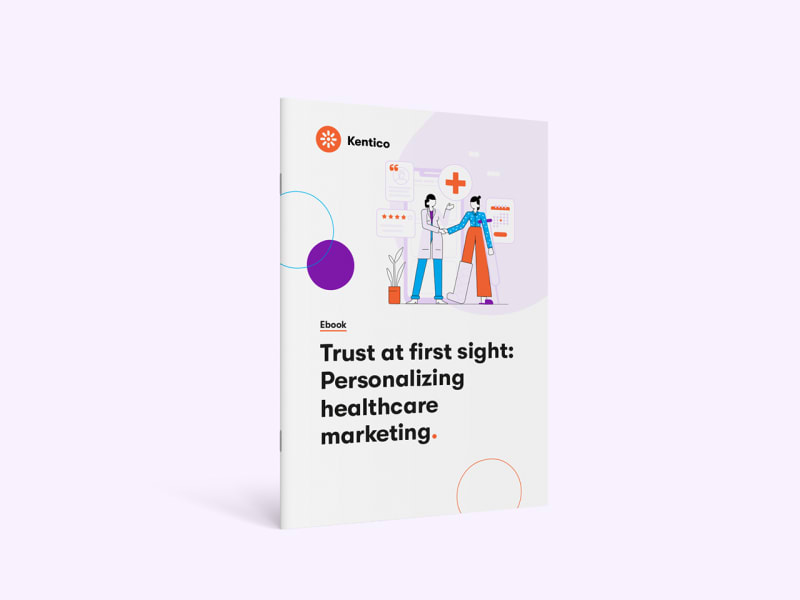Tech is moving at the speed of light, and with the AI revolution happening in recent years, it seems like it's going into high gear. However, it seems that digital technology has some catching up to do in healthcare. Because of strict legislation and abundant work, healthcare professionals often struggle to keep up with digital technologies.
So, let's discuss some of the most common challenges with digital transformation in the healthcare industry and solutions that healthcare providers might find helpful.
Data security and privacy
One of the most common reasons health professionals are wary of healthcare digital transformation is the security of the data they work with every day. When healthcare organizations make their data digital and put it in the cloud (such as electronic health records), this opens up a world of possibilities for abuse.
In 2023 alone, there were over 6 billion recorded cyber attacks. And as a healthcare professional, you should worry about patient outcomes rather than the patient's medical history being exposed online.
Many other industries are facing the same challenges with digital technology. But in healthcare, the digital transformation challenges are even more significant. There are legislations such as HIPAA, CCPA, and GDPR to watch out for. And with artificial intelligence using data to become even better, your data is in more danger than ever before.
To jump over this obstacle on your digital transformation journey, healthcare organizations should carefully consider their options in terms of software choice. As your digital transformation efforts kick off, request the software vendor to explain how their tools comply with legislation such as HIPAA. Internally, review who has access to relevant data and at which point.
Resistance to change
Health professionals often approach change with caution. Even with electronic health records, which are omnipresent, there is still a lot of friction. This not only slows down digital transformation in healthcare but also causes patient issues.
Several reasons may cause resistance to healthcare digital transformation:
- Lack of time and energy for technology training
- Fear of disruption to established workflows and processes
- Conservative culture in the organization
The best way to encourage healthcare providers to embrace new technologies is to show them how the tech works, how it can save their time, and how it benefits patient outcomes. Implementing new digital technologies without proper instructions and onboarding first will result in even more resistance.
The cost of new digital technologies
Implementing new software in healthcare organizations can be very costly. Smaller healthcare organizations need to spend a good chunk of their budget to find, try out, and learn new digital technologies.
The added problem is that when healthcare professionals are busy learning a new tool they may have to cut back on time spent on patient care and clinical decision-making.
The way to get around that is to carefully check new digital technologies before presenting them to healthcare professionals. You need to secure approval and explain the return on investment to your team, not just in terms of financial resources but also how a new tool can improve patient outcomes.
Workforce training and education
The average doctor spends 15.5 hours every week handling paperwork. The digital transformation in healthcare is often held back because the care providers are too busy with everyday work to try and learn new digital technologies.
The healthcare digital transformation can only happen if the training and education around a new digital technology are effortlessly embedded in their everyday life and work.
In other words, we're going back to scare one: trying out a new technology first is crucial if you want healthcare professionals to adopt it later on. Ensure the new tech has ample customer support and that the onboarding is effortless.
For example, introducing electronic health records in healthcare organizations can take 60 to 90 days. For each new technology, check what training the vendor offers, estimate how much time your colleagues will need to learn it, and add it to their existing set of technologies.
The standardization
Once you've done the hard work of picking out a new digital technology, you've barely scratched the surface of digital healthcare information. With a new tool or process in place, healthcare providers should aim to standardize it so everyone handles data similarly. This not only ensures better quality of work but also helps mitigate the risk of data security breaches.
One way to bridge this gap in healthcare digital transformation is to create standard operating procedures and guidebooks for new initiatives. Let's say you want to introduce a new tool on your digital transformation journey that allows patients to make appointments online. Before introducing it to your clinicians, create a clear plan of implementation and use in their everyday work.
Interoperability
One of the most common reasons digital transformation fails in the healthcare industry is software compatibility. For example, your medical diagnosis software uses an entirely different database than your electronic health records or hospital management software.
As a result, the apps can't play well together, and even with the best data in the world, healthcare providers are forced to spend double the time on two separate apps.
To prevent this from halting your digital transformation, the best course of action is to carefully check the flexibility of new software before committing to it. Talk to the sales reps and customer success team and ensure that the software you're about to purchase connects with your existing tech stack.
Reliance on legacy systems
The reliance of the healthcare industry on antiquated legacy systems holds back progress in the healthcare industry. The reason is pretty simple - healthcare organizations stick to what works. It's not uncommon to see healthcare companies still using Microsoft XP because it has all the relevant medical data. More importantly, switching to something more modern would require investments in time and money.
While this may seem like a massive step for healthcare organizations, it's necessary for improved patient outcomes and the efficiency of everyday operations. Also, legacy healthcare systems are not updated as frequently as digital health technologies. As a result, they can be more vulnerable to cyber attacks.
To safeguard every patient's health and provide a modern digital experience, test out new systems rigorously before committing to one that is easy to use, compliant with the most important regulations, and integrates well with the rest of your tech stack.
The new digital transformation with a DXP
For healthcare organizations wanting to keep up with the times, having a functional, beautiful website that serves the right content is a must. And in the healthcare industry, keeping pace and serving personalized content is critical.
This is where a digital experience platform (DXP) comes in—allowing you to have all your marketing materials in one place. You can access your content with one click and choose whether to share it on your website, social media channels, or elsewhere. And don't worry, your data is safe in the cloud built by all data protection best practices.
Learn more about reach your audience in healthcare by building trust with our free ebook, Trust at first sight: Personalizing healthcare marketing.


